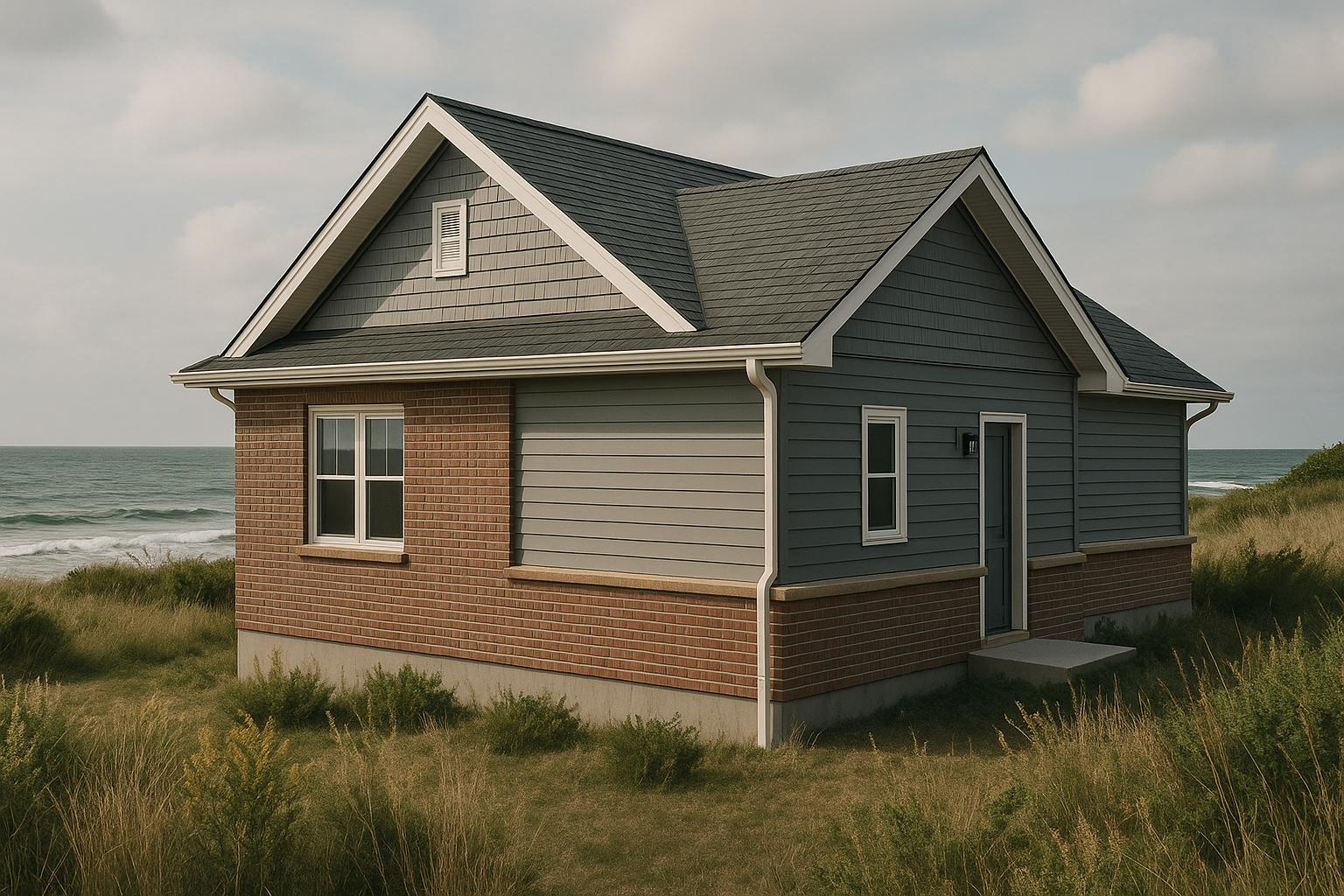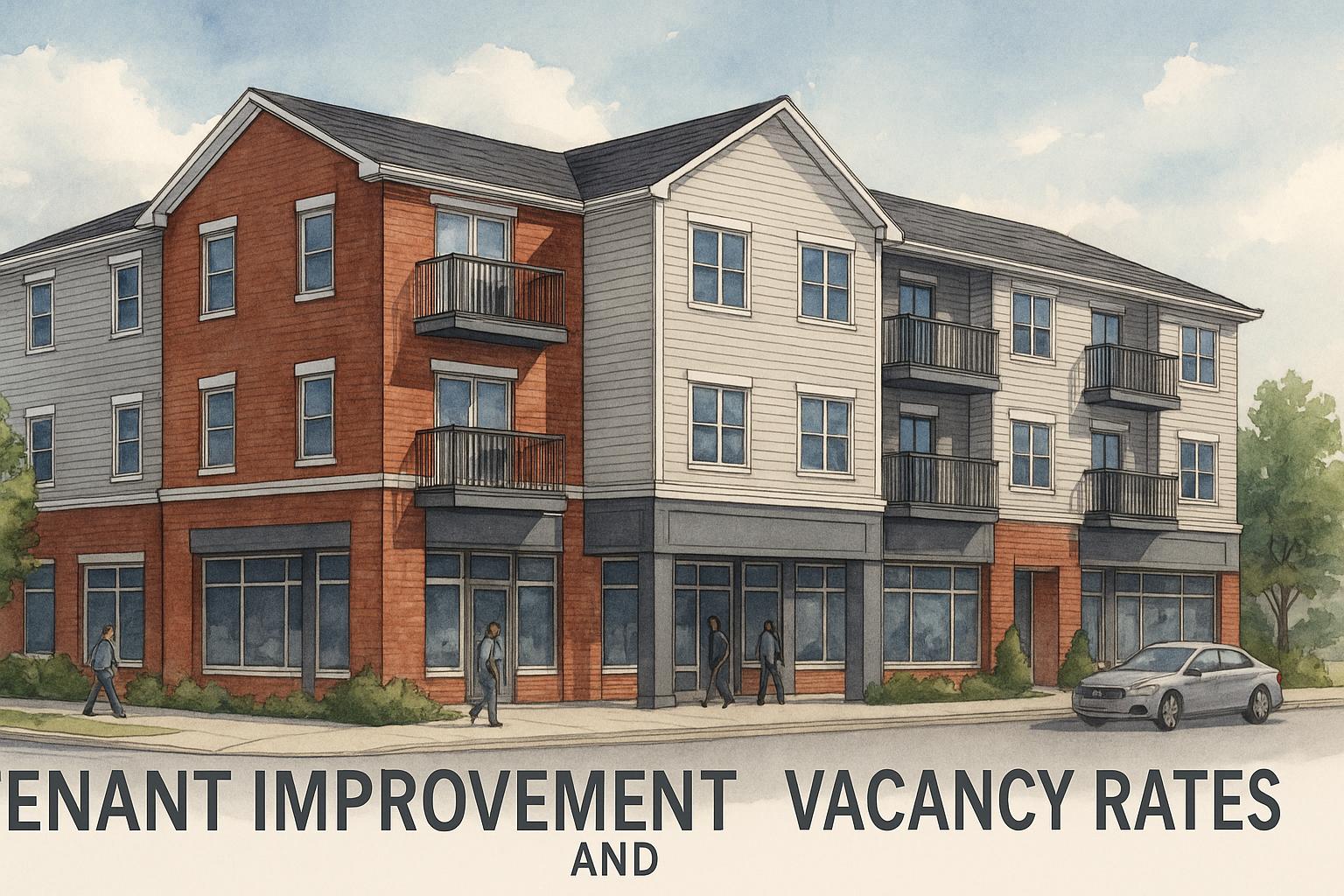Utility connection fees in Halifax Regional Municipality (HRM) can be costly and often overlooked during project planning. These one-time charges cover water, sewer, electricity, and natural gas connections, all of which are mandatory for occupancy permits. Costs depend on factors like location, infrastructure distance, and project size, ranging from a few thousand dollars to tens of thousands. Failure to budget for these fees can lead to delays, increased costs, and reduced profit margins.
Key Points to Consider:
- Urban vs Rural Costs: Urban areas like Halifax and Dartmouth have lower fees due to established infrastructure, while rural areas face higher costs for extending services.
- Approval Processes: Permits, inspections, and legal steps (like easements) can add time and expenses.
- Budgeting Tips:
- Estimate fees based on location and project size.
- Account for permits, inspections, and site-specific costs.
- Include a 10–15% contingency for rate increases or unexpected expenses.
- Fixed-Price Contracts: These can simplify budgeting by locking in costs and reducing risk.
Proper planning and coordination can help avoid surprises, save time, and keep your project on track.
Utility Connection Costs in HRM
Understanding the costs involved in connecting utilities is crucial for creating a realistic budget and avoiding surprises. These expenses can vary widely depending on your property's location, size, and specific service needs. Here's a breakdown of the fees for water, sewer, electricity, and natural gas connections in Halifax Regional Municipality (HRM).
Water and Sewer Connection Fees
Halifax Water oversees water and sewer services in the region, making them your go-to for these connections. Their fee structure typically includes:
- Basic connection fee
- Development and extension charges
- Fire protection surcharges
It's a good idea to reach out directly to Halifax Water to confirm the most up-to-date details for your project.
Electricity Connection Costs
Nova Scotia Power handles electrical connections across HRM. The costs for connecting your property depend on several factors, such as the service requirements, the electrical load needed, and your property's distance from existing infrastructure. These costs may include:
- Basic connection fees
- Charges for extending service lines if your property is far from the nearest power source
- Costs for equipment or upgrades needed to meet your building's electrical demands
- Temporary construction power fees until a permanent connection is established
For accurate estimates, it's best to discuss your specific requirements with Nova Scotia Power.
Gas Line Installation Costs
If you're considering natural gas service, Heritage Gas is the provider for many areas in HRM. However, availability can vary depending on your location. Connecting to natural gas involves several costs:
- Standard connection charges and service line installation fees, which depend on the distance to existing gas mains and the complexity of the installation
- Allowances toward installation costs, with any additional charges falling on the property owner
- Extension fees for properties outside the current service area
- In rural areas without natural gas service, you’ll need to explore alternative heating options
To get a clear picture of the potential expenses, it's wise to consult Heritage Gas early in your planning process.
How Costs Vary Across HRM
Where your property is located has a big impact on utility connection costs. Being close to established infrastructure usually means lower expenses, helping you plan your budget more accurately.
Urban vs Suburban vs Rural Costs
Urban areas like downtown Halifax, Dartmouth, and Bedford tend to have the lowest utility connection costs. These areas benefit from well-established infrastructure, with water and sewer lines running beneath most streets, easy access to electrical services, and natural gas lines already in place for many properties.
Suburban areas such as Clayton Park, Sackville, and Eastern Passage fall in the mid-range for connection costs. While utilities are available, properties located farther from existing lines may face extra charges. For instance, if your property is in a newer subdivision or on a larger lot, you might encounter extension fees to bring utilities closer.
Rural properties in areas like Musquodoboit Valley, Sheet Harbour, and the Chebucto Peninsula often face the highest costs and the most complex setups. Extending infrastructure to these locations can be expensive, and natural gas service may not be an option. In such cases, homeowners might need to explore alternatives like propane or electric heating systems.
The distance from existing infrastructure is a major cost factor. Connecting a property 50 metres from a water main is far cheaper than one requiring 200 metres of new service line. Similarly, electrical connections that involve installing new transformers or extending power lines can add thousands of dollars to your expenses. On top of that, challenging terrain - like rocky surfaces or steep slopes - can drive up labour and installation costs.
Required Approvals and Permits
Beyond location, regulatory requirements can also influence your connection costs.
For water and sewer connections, Halifax Water requires site plans and engineering drawings before granting approval. Their review process typically takes 4–6 weeks, and they may request changes to your proposed connection methods.
If your project involves electrical upgrades for larger multi-unit properties, the Nova Scotia Utility and Review Board (NSUARB) must approve the work. This step is crucial for projects requiring new transformers or substantial electrical infrastructure changes and can add several months to your timeline.
Approval from HRM Planning and Development is also necessary for your overall development plans. This includes ensuring your property complies with zoning rules and building setbacks, which can influence where utilities are placed.
For natural gas connections, Heritage Gas has its own approval process, which includes safety checks and pressure testing. If your property is in an area without existing gas service, they’ll assess the costs and timelines for extending their infrastructure.
In some cases, additional legal steps are required. If utility lines need to cross neighbouring properties or municipal land, you may need easements or right-of-way agreements. These situations can add months to your timeline and significantly increase costs.
Environmental assessments may also come into play, especially for rural properties or those near wetlands or heritage sites. The Nova Scotia Department of Environment and Climate Change handles these reviews, which can further delay approvals.
Hiring experienced contractors familiar with these processes can save you time and headaches. They know which documents to prepare, how to navigate regulatory requirements, and how to avoid unnecessary delays, helping to keep your project on track and within budget.
Understanding how location and regulatory requirements affect costs can help you plan for utility connections more effectively.
How to Budget for Utility Connection Costs
Planning your budget for utility connection costs involves more than just adding up fees. By taking a methodical approach, property owners can steer clear of unexpected expenses and keep their projects running smoothly.
Step-by-Step Fee Estimation Guide
Start by determining the number of units in your project. Many fees in Halifax Regional Municipality (HRM), such as Regional Development Charges (RDC) for water and wastewater, plumbing permits, and solid waste connection fees, are calculated on a per-unit basis. For example, a four-unit building will incur different charges than an eight-unit property, so this figure significantly impacts your overall budget.
Next, identify your property's connection type. Properties hooking up to Halifax Water's central systems will face different costs compared to those requiring septic systems. This decision not only affects upfront expenses but also ongoing approval requirements.
Then, calculate your base connection fees using the current rate schedules. Halifax Water determines fees based on meter size and service type. For electricity, Nova Scotia Power charges standard connection fees for residential properties, but multi-unit developments may require upgrades like transformers or modifications to service panels. For natural gas, Heritage Gas fees depend on how close your property is to existing lines and the complexity of installation.
Don’t forget to account for permits, inspections, and any site-specific costs. HRM building permits, electrical permits, and plumbing permits each come with separate fees. Additionally, utility providers require inspections and final approvals before activating services. If your property needs service line extensions, has challenging terrain, or requires specialized equipment, these factors will add to your costs. Also, if easements across neighbouring properties or environmental assessments are necessary, include legal and consulting fees in your budget.
To stay organized, create a detailed cost sheet that tracks each utility provider, connection type, permits, and estimated costs. This will help you identify potential issues early and serve as a reference when comparing contractor quotes.
By following these steps, you’ll lay the groundwork for hiring reliable contractors and keeping future expenses under control.
Fixed-Price Contract Benefits
Once you’ve estimated your fees, consider securing a fixed-price contract to simplify financial planning. Fixed-price contracts eliminate uncertainty by locking in costs and assigning accountability to a single party. This approach avoids the chaos of coordinating multiple contractors, utility providers, and permits, which often leads to miscommunication and budget overruns.
Fixed-price agreements provide cost predictability and stability, shielding you from unexpected increases in material or labour costs. For example, when a construction contract includes utility connections at a set price, you can plan your budget without worrying about fluctuating rates.
| Feature | Fixed-Price Construction | Traditional Fragmented Approach |
|---|---|---|
| Cost Certainty | Locked-in pricing for the project | Multiple quotes from various contractors |
| Coordination | Single point of accountability | Owner manages multiple professionals |
| Timeline | Guaranteed completion dates | Scheduling across trades is uncertain |
| Budget Protection | Shielded from cost increases | Exposed to market fluctuations |
| Problem Resolution | One team handles all issues | Conflicts between contractors |
Beyond cost control, fixed-price contracts streamline coordination. When your design team, engineers, and construction crew collaborate from the start, they can plan utility connections more effectively. This proactive approach avoids common issues like plumbing and electrical conflicts or water service locations interfering with structural plans.
By working with a single team, property owners avoid juggling multiple contracts and relationships, reducing stress and ensuring the project stays on time and within budget.
Planning for Rate Increases
Once you’ve calculated your base fees and site-specific costs, it’s wise to prepare for potential rate increases. Utility rates and construction costs can change, so it’s essential to include a contingency in your budget from the outset. Even with a fixed-price contract, some municipal fees and utility connection charges may rise between the planning and construction phases.
Set aside a 10–15% contingency to cover unexpected fees or rate changes. This buffer helps address issues like additional permit requirements, longer service runs, or new regulations that may arise during the approval process.
Keep an eye on rate announcements from Halifax Water, Nova Scotia Power, and Heritage Gas. These utilities often update their rates annually, and knowing the timing can help you lock in current rates when possible. Some fees can be paid upfront to avoid increases, while others are due at the time of service activation.
Track your project timeline to understand when fees will come into play. For example, building permit fees are typically paid early, while utility connection charges are often due closer to project completion. If your construction takes six months, your final utility payments could reflect updated rates.
Consider the broader economic landscape when setting your contingency. During periods of high inflation or supply chain disruptions, utility providers and municipalities may implement larger rate increases. Properties in fast-growing areas might also face unexpected assessments or infrastructure improvement charges.
Consult experienced construction professionals who understand how rate changes can impact budgets. They can pinpoint costs most likely to increase and suggest strategies to minimize unexpected expenses. This expertise is particularly valuable for larger projects, where even small percentage increases can add up to significant costs.
sbb-itb-16b8a48
Common Mistakes and How to Avoid Them
Budgeting for utility connection fees in HRM can be tricky, especially for owners of multi-unit developments. One frequent error is assuming that these fees will stay the same throughout the project. The reality? Fees often shift due to unexpected site conditions, permit delays, or fluctuating utility rates. Ignoring these changes and sticking to an outdated budget can lead to costly overruns and frustrating delays.
Cost Management Best Practices
To stay on top of your budget, make it a habit to update it regularly as utility rates and fees change.
"Failing to account for changes in spending during certain months can really throw off your budget", advises The Advice+ team at Scotiabank [1].
Breaking your budget into monthly segments can also help. This method allows you to account for both routine and irregular expenses, giving you a clearer picture of how costs might shift as your project moves forward.
It’s also wise to set aside an emergency reserve for unexpected costs. By tracking your expenses throughout the construction process, you can spot patterns early and make adjustments before minor issues snowball into major financial problems.
Planning Utility Connections with Confidence
Handling HRM utility fees strategically can help you sidestep unexpected costs that often disrupt multi-unit construction projects. A well-structured budget ensures you're prepared, avoiding the financial hiccups that can come with poor planning.
The main issue lies in how utility planning is approached. In fragmented construction, different contractors handle separate aspects of utility connections - electrical, water and sewer, and gas lines - without much coordination. This disjointed process often leads to inaccurate cost estimates and timeline mismanagement, especially when site conditions or permit requirements aren't fully considered.
By contrast, an integrated construction model simplifies the process. When design, engineering, and construction teams collaborate from the outset, they can spot utility-related challenges early and provide more precise cost estimates before work begins. This unified approach not only reduces financial uncertainties but also helps streamline project management.
For multi-unit projects, fixed-price contracts offer another advantage. Unlike cost-plus models, where unexpected overruns fall on the property owner, fixed-price agreements transfer that risk to the builder. This is particularly beneficial when utility connections become more complex as the number of units increases.
Beyond cost savings, coordinated utility planning can significantly cut down construction timelines. Instead of the typical 12–18 months, streamlined utility installations can shrink the timeline to about six months. For property owners in HRM, where monthly rent per unit averages $1,950–2,100, every month saved translates to valuable rental income. These time savings can directly strengthen your overall budget strategy.
Clear documentation also plays a key role in maintaining financial confidence throughout the project. Features like daily photo updates and real-time tracking let property owners stay informed and address potential issues early, avoiding the delays and cost escalations common with traditional methods.
Utility planning isn't just about managing initial costs. Energy-efficient solutions, while potentially more expensive upfront, can lead to substantial savings over time. When combined with a coordinated planning approach, these investments can further enhance your project's financial stability and performance.
FAQs
What can property owners in rural areas of HRM do to manage higher utility connection costs?
Property owners in rural areas of the Halifax Regional Municipality (HRM) often encounter higher utility connection costs. This is largely due to longer distances from existing infrastructure and the lower population density in these regions. To navigate these expenses effectively, consider the following steps:
- Start planning early: Collaborate with your builder or contractor as soon as possible to get a clear picture of the costs for connecting water, sewer, electricity, and gas in your area.
- Reach out to local utility providers: They can offer detailed estimates and suggest cost-saving options, such as shared connections when available.
- Prepare for the unexpected: Allocate extra funds in your budget to handle unforeseen expenses, as rural connections can come with unique challenges.
By staying organized and working closely with experts, you can manage costs effectively and keep your project financially on track.
Why is a fixed-price contract a smart choice for budgeting utility connection costs in HRM?
A fixed-price contract offers predictable costs, making financial planning much easier and helping you sidestep unforeseen expenses. In this arrangement, the contractor assumes responsibility for any cost overruns, ensuring your project stays within the agreed budget.
This type of agreement is particularly helpful when setting up utilities such as water, sewer, electricity, and gas. It removes the guesswork and allows for more precise budgeting during your construction project.
How can property owners budget for potential utility connection fee increases during their project?
When your lot combination gets approved, it’s a good idea to reach out to Halifax Water without delay. This will help you get the most accurate and current cost estimates for utility connection fees, which can differ based on your location and the infrastructure required.
It’s also smart to build a contingency into your budget to cover any potential rate changes during your project. Taking this step can help you avoid surprise expenses and keep your planning process on track.



